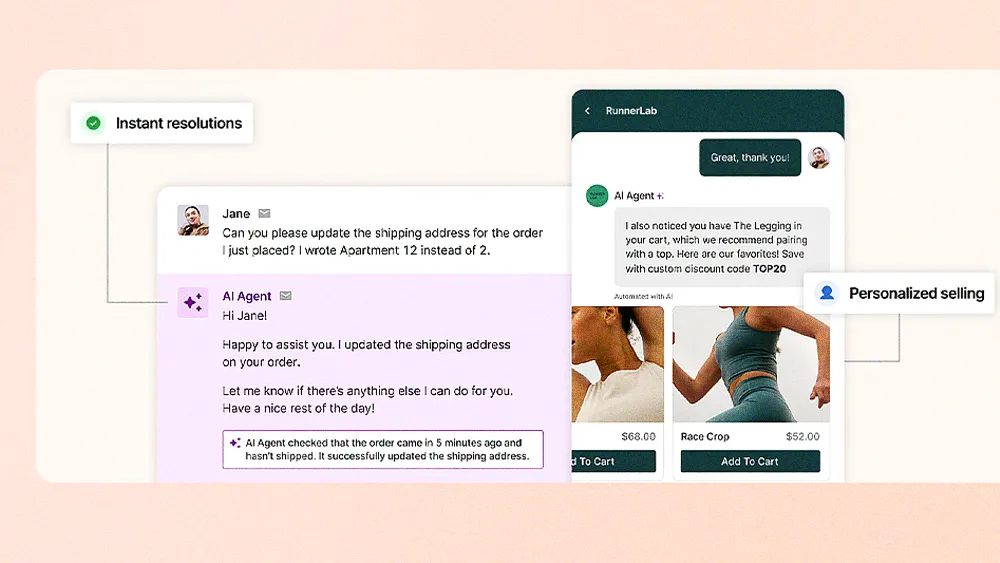Jay Rajagopalan Aiyar, Chief Product Officer at Ecoservity, on the importance of a central orchestrator agent to manage siloed AI agents.

Everybody's talking about what they can do in this domain or that domain. Working in a silo is great and all. But at the end of the day, how is that going to come together? That's the trillion-dollar question.
The race to agentic AI has many enterprises running into a familiar risk. Instead of making organizations more efficient, specialized agents might worsen a persistent, costly business problem: information silos. Now, some experts say the silos created by domain-specific agents could introduce significant consequences for organizations that aren't adequately prepared.
To learn more, we spoke to Jay Rajagopalan Aiyar, Chief Product Officer at Ecoservity and a seasoned SAP Solution Architect. With over 28 years of experience in enterprise system integration, Aiyar has spent decades working with industry-specific SAP solutions for global brands like Nike and Levi’s. From his perspective, the siloed systems that specialized AI agents create could be the technology's most significant risk.
A trillion-dollar question: The rapid rise of domain-specific AI agents is creating a new generation of "intelligent silos," Aiyar explained. "Everybody's talking about what they can do in this domain or that domain. Working in a silo is great and all. But at the end of the day, how is that going to come together? That's the trillion-dollar question."
Old problems, new tools: Today's multi-agent approach is simply the latest attempt to connect disconnected systems, according to Aiyar. To illustrate the point, he likened the situation to SAP customers, who often have a long history of managing best-of-breed solutions requiring complex interfaces like Manhattan and Red Prairie. "We still deal with customers who have a ton of different systems and interfacing software. And we still see breakdowns. How in the AI world is it all going to be any different?"
For many organizations, integrating agents is often the most difficult technical challenge, Aiyar explained. But bridging intelligent silos will require more than APIs. Instead, he said a philosophical shift is often necessary first.
The orchestration gap: A central "orchestrating agent" is essential to make siloed agents work together, Aiyar said. Beyond the ability to route traffic, it needs near-human intelligence to understand context, history, and intent across different domains. "The all-encompassing orchestrating agent in the middle—how is it going to deal with all these siloed experts in their own domain? It needs to think like a human to pull all these things from the various domain-specific agents."
But the consequences of this orchestration problem extend far beyond inefficiency, Aiyar said. When agents operate on delayed or incomplete data, they pose a direct threat to a company's bottom line. Here, a compliant agent acting perfectly on outdated information introduces more risk than a rogue agent does.
A real-time data risk: In retail and fashion, decisions on inventory, pricing, and logistics depend on real-time data, Aiyar explained. "If the numbers are not real-time, you could inflate your margins if the landed cost is more than you anticipated. For example, with tariff data. You might claim profitability when, in reality, these numbers could be eating up your profit instead."
The governance question: To maintain control over autonomous agents, organizations must set firm boundaries, Aiyar said. An agent should never get so out of control that it would override decisions made by a human expert, for instance. "This is where the guardrails come in. You can't just let the floodgates open. The damages could outweigh the benefits. You have to walk a fine line." The level of autonomy should be decided on a case-by-case basis, he continued. A proactive agent might be helpful for sending a missed invoice, but total freedom is too risky.
Ultimately, Aiyar said the biggest obstacle to successful AI adoption is organizational. The bottleneck, he said, is the disconnect between the C-suite, where AI strategy is born, and the line-level workers who face the everyday problems AI is meant to solve. "AI today is still with the C-level guys, in the PowerPoints and some POCs. It hasn't trickled down to the line workers who actually run into the problems AI is meant to solve." Instead, he concluded, real value and user adoption will only happen when the C-level vision is united with the grassroots reality of the employees. "It shouldn't be a top-down mandate. Business adoption happens only when the users embrace it, and I don't think we're seeing that yet."



